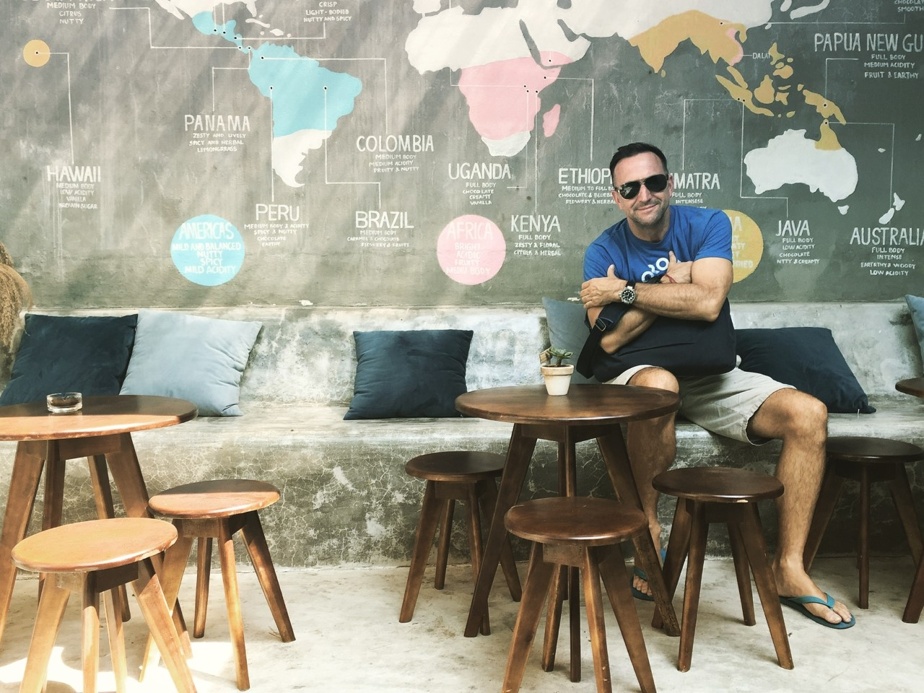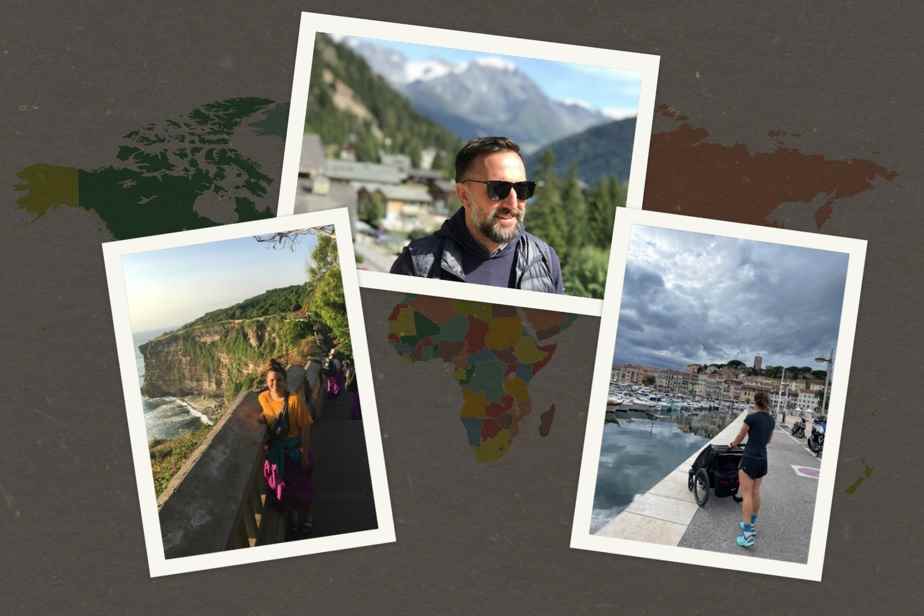Entrepreneur and adventurer Lydiane St-Onge, who is behind the show and the blog Lydiane around the world, is one of the followers of long-term travel. She’s done a lot, venturing to all four corners of the world, often with only a one-way ticket in her pocket.
Last September, she traveled to Europe with her lover and her daughter for a two and a half month trip. “With a baby, you definitely don’t want to leave for a week, unless it’s in the same time zone,” says the new mom. Traveling with your daughter therefore rhymes with slow travelshe says.
It was also important for her to “deposit in the country”. The time was right to leave since she was on maternity leave and her lover could telecommute.

PHOTO PROVIDED BY LYDIANE ST-ONGE
Lydiane St-Onge, her spouse and her daughter, during their trip to Europe
“We were in the same place for about two weeks – doing our groceries, discovering the little corners, going to get a coffee, says Lydiane St-Onge. We ended up meeting people. I made friends with moms because we used to go to the same park. »
It is also the idea of resting longer that attracted columnist and host Jean-Michel Dufaux to take a long trip.

PHOTO PROVIDED BY JEAN-MICHEL DUFAUX
Jean-Michel Dufaux in Vietnam
I had always been tempted to take the famous sabbatical year, but I kept putting it off.
Jean Michel Dufaux
It was finally in 2018 that he made the leap. The animator later wrote his book My Year Abroad – Slow Travel Story which recounts and “demystifies” his trip, where he landed in Thailand, Mexico, Vietnam and then in Europe.
Several existential questions — personal and professional — tormented him. “It was time to take a break and leave to come back better,” he says. He did a few freelance jobs that year, but also took time to explore the cities where he lived.

PHOTO PROVIDED BY CAMILLE RICHER
Camille Richer
Employment counselor Camille Richer also prefers longer trips. “It allows me to better visit the country, to take the time and to be less on the run,” she says. She took advantage of her free time during her studies to experience it. She notably left for three months in Europe and two months in Indonesia.
Breaking the rhythm of everyday life is a reason often given for going on a trip, says Isabelle Falardeau, professor in the department of studies in leisure, culture and tourism at the University of Quebec at Trois-Rivières (UQTR). And those who choose to take a long trip want to “get out of time for a long time,” she says.
These travelers also have other reasons for choosing a long-term trip, such as getting closer to residents, having a better social impact or wanting to get off the beaten track, she lists.
But difficult to paint a typical profile for this kind of trip. “It can be people with more time at their disposal, and more discretionary income, such as young adults or retired people,” says Isabelle Falardeau.
Planning, or very little
Lydiane St-Onge and her lover had not planned their itinerary before leaving in September. They wanted to extend their summer and knew they wanted to explore Europe, so they headed to Nice for their first destination. They thus discovered several cities of France and Switzerland by renting apartments according to their desires.
The fact of doing long-term, it lets you be carried by your mood, also by temperature. We can afford to change the schedule, so we are less stressed.
Lydiane St Onge
During his long travels, Camille Richer planned little. She reserved a few days at a youth hostel, but also liked to leave room for surprises. “I didn’t even look at what there was to visit there,” she said. It also allows you to try recommendations from locals, such as a small hidden waterfall or restaurants. »
Changes in plans also occurred during Jean-Michel Dufaux’s trip, but he kept to his goal of living in the same city for a few months at a time.
“I could not have made this trip if I had chosen cities like London or Paris, but by choosing cities that were not too expensive, it was possible”, explains the host, who believes that this type of trip is more accessible than you think.
Precisely, Lydiane St-Onge is convinced that it is quite possible to travel in the long term without breaking the bank. “We mistakenly think that long-term travel is expensive, but not at all if we find solutions. Her solution: rent her house and her car. This allowed them to pay for their plane tickets and even their rental car.
A reverse trend
“The vast majority of trips made are short stays,” says Professor Isabelle Falardeau. It’s a growing trend, even. »
However, with the pandemic, some have questioned their relationship to travel, she says. There are digital nomads, for example, who can work from anywhere. Eco-conscious travelers are considering the idea of traveling less, but longer at the same time. There is the idea of traveling better, “but that’s to be seen”, concedes Isabelle Falardeau.
And during periods of crisis — such as a possible next recession — the tendency is to “travel less far and for less time,” says the professor.
However, the travelers questioned recommend long-term travel. “It did me good for my soul and my head,” says Jean-Michel Dufaux. It was like an introspective break. »
Lydiane St-Onge strongly suggests it and she hopes to be able to repeat the experience in the spring. She even dreams of adopting a lifestyle where her family would travel twice a year for a few months. “It would add exploration to life and introduce my daughter to travel. »
